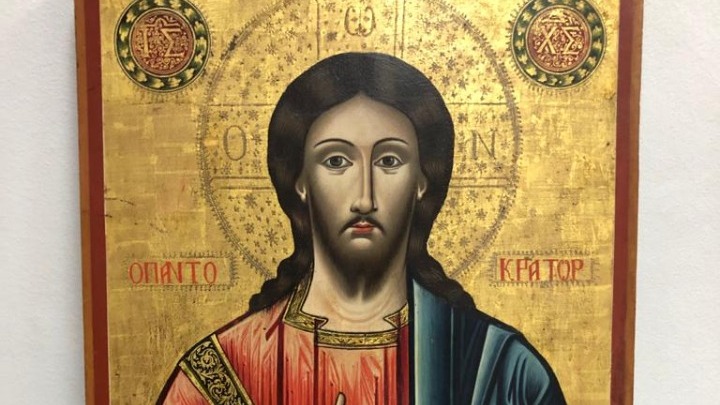
A pair of stolen icons will return to Greece after they were handed over to the Greek Embassy in Beirut, Lebanon, on Tuesday.
The two priceless pieces, dating back to the eighteenth century, feature iconic depictions of Jesus and Mary in the Orthodox iconographic tradition.
In 2006, the Greek Ministry of Culture announced that a thief had stolen the precious artworks, along with other holy items, from the Aghia Triada Monastery in Oxia, Karditsa in central Greece.
Hoping to locate the holy artworks swiftly, Greece’s Ministry of Culture placed the icons on the Interpol database featuring stolen works of art.
Considering Interpol‘s status as an organization that fosters international police cooperation, officials were hopeful about locating and returning the icons to Greece.
However, It would take years for any sign of the eighteenth-century icons to appear on the art market.
Stolen icons located in Lebanon
In October 2020, a Greek archaeologist working for Greece’s Department for the Verification and Protection of Cultural Goods, caught a scent of the missing icons.
The discerning official spotted the icons on the list of items for an auction to be held in Dusseldorf, Germany in November of that same year.
After locating the artworks, Greece’s Ministry of Culture requested help from Interpol in retrieving the icons and bringing them back to their home in Karditsa.
Although details regarding the identity of the thieves or prior locations of the works have not been released, investigators were able to locate the icons successfully before the auction.
After a thorough search, authorities determined that the priceless works were being held in Lebanon until the auction in Dusseldorf in November.
Before their sale on the art market, Interpol was able to intervene and gained possession of the stolen works, which are currently being held in the Greek Embassy in Beirut until they can be safely returned to Greece.
The holy icons depict Christ and the Virgin Mary
The first icon, painted in 1735, shows the Christ Pantocrator, or all-powerful.
Found in icons, frescoes, and mosaics across the Christian world, this image of Christ is one of the most common in all of Christianity. It also has some of the oldest iconographic roots in the Church, as it is widely considered to be one of the first depictions of Christ.
As the Pantocrator, Christ is shown holding the New Testament in one hand and making a gesture of teaching with the other. This image portrays Christ’s status as not just a stern teacher, but also a wise, powerful, and gentle model for humanity.
The second of the stolen icons, completed in 1785, features the Virgin Mary Hodegetria. in this depiction, Mary is shown holding the Christ-child and pointing to Him, indicating His status as the Savior.
Much like the Pantocrator, this conventional pose of the Virgin is one of the most popular and widely venerated images of Mary, not only in Orthodox Christianity, but also in the Western Church.
See all the latest news from Greece and the world at Greekreporter.com. Contact our newsroom to report an update or send your story, photos and videos. Follow GR on Google News and subscribe here to our daily email!



